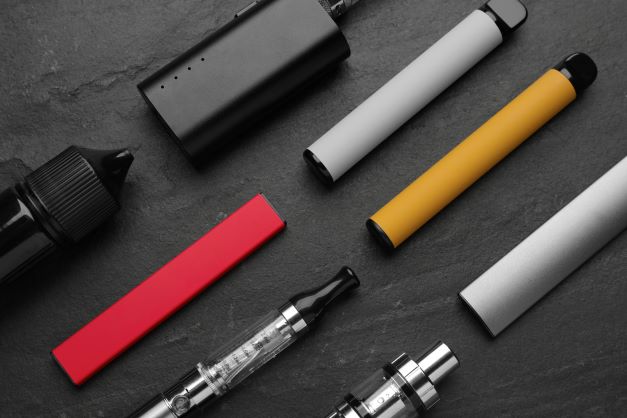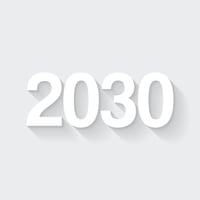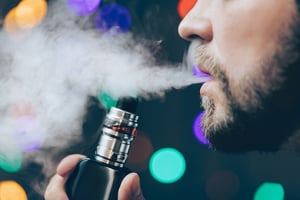Broughton's Chief Scientific and Regulatory Officer Dr. Nveed Chaudhary discusses the recent FDA announcement on marketing orders and what this means for ENDS manufacturers.
Trends in the Next Generation Nicotine Product Industry: 2022
Nicotine

Dec 23, 2022 | Published by Dr. Nveed Chaudhary
Nicotine, Trends
Trends in the Next Generation Nicotine Product Industry: 2022
The next generation nicotine product industry continues to change and evolve as government and regulatory bodies implement legislation and new product innovation and technological advances continue at pace. Staying on top of this vibrant and dynamic sector is challenging for anyone, but the commercial rewards remain substantial, as does the prize of creating a smoke-free future and improving quality of life for millions.
Below, Dr Nveed Chaudhary, Chief Scientific and Regulatory Officer at Broughton highlights some key developments and trends in 2022 that have impacted the industry.
Synthetic nicotine addressed in the US
It was probably not a surprise to many when the U.S. finally got around to closing the regulatory loophole, which had allowed synthetic nicotine products to continue to sit outside of the PMTA regulatory framework. Previously, only tobacco-derived nicotine products were classified as coming under the authority of the FDA.
In April 2022, after considerable debate, Congress passed a law to update the Tobacco Control Act indicating that products containing nicotine of any kind must be regulated by the FDA’s Center for Tobacco Products and set out a timetable for this to happen. The change brought synthetic nicotine into line with tobacco-derived nicotine with regard to U.S. regulations. Although many manufacturers complained about not having sufficient time to prepare PMTA applications before the deadline on July 13th, these companies should have been able to see the direction of travel for U.S. lawmakers and started preparing for the law change months in advance.
It was always likely that synthetic nicotine next generation products would be given the same status as tobacco-derived nicotine ones, and one of the most important things I’ve learned from over ten years in this industry is looking ahead to regulatory changes that are likely to come into force is essential to stay ahead of the competition.
Don’t just look at the regulatory frameworks as they affect your business today, make sure you are planning and preparing for how regulations are likely to evolve as a way of protecting investments in research and product development.
The clamp down on NGP messaging and education continued
One of the trends that continued for the global next-generation nicotine market in 2022 has been the implementation of stricter rules governing the sale and marketing of e-cigarettes. Many countries have introduced tighter age limits for the purchase of e-cigarettes, with some following the U.S. example and requiring buyers to be at least 21 years old. Additionally, there has been a further tightening of regulations limiting the advertising and promotion of e-cigarettes, with many countries banning the use of product promotions or free trials, OOH advertising (‘Out of Home’ advertising, such as billboards and public space advertising), and engagement or promotion through social media.
Although all NGP manufacturers have a responsibility to ensure their products do not attract non-smokers and youth, the continued restrictions impact the education of adult smokers with many of these regulations resulting in a lack of consumer education and a failure of nicotine delivery devices reaching the smokers they were designed to help.
National governments should continuously review their regulations and support more communications and messaging about the benefits of NGP in helping smokers off-ramp to something less harmful than smoking tobacco. Access to information and category education for medical professionals about the potential benefits to smokers of using next generation nicotine products is essential if governments are to be successful in reducing smoking rates.
The question remains - can menthol NGP survive in the US?
The recent FDA MDO for menthol products means the sector is ending the year with great uncertainty about the future of non-tobacco flavors in the U.S.
The FDA's decision was based on the agency's concern that menthol e-cigarettes could attract younger users, who may be more susceptible to the addictive properties of nicotine. The FDA also cited that menthol products didn't demonstrate an additional benefit over tobacco flavored. This decision is likely to have wide-reaching implications for the e-cig industry, as other menthol e-cigarette brands will likely face similar challenges in obtaining PMTA approval. It also signals a potential shift in the FDA's approach to regulating e-cigarettes, with a greater focus on the potential health risks of flavored products. It is important to note that this regulation won’t remove menthol/flavored products from the market entirely, but rather greater evidence regarding the benefit of the products and tighter controls over potential youth usage (e.g., age verification) will be required.
For more insight into this issue please see my earlier blog on the subject Broughton responds as FDA denies marketing order for Logic’s menthol e-cigarette products
China tightens nicotine product regulations
This year also saw the Chinese government implement strict regulations on nicotine products including a ban on the sale of flavored e-cigarettes. Under the new regulations, the sale of nicotine products, including e-cigarettes, is only permitted in government-licensed tobacco shops, and they can no longer be sold in convenience stores or online. Additionally, advertising and promotion of nicotine products are prohibited. This includes advertisements on television, radio, and social media, as well as in-store displays and product packaging.
The regulations also set strict limits on the amount of nicotine that can be contained in a product. The Chinese government has chosen to align with European regulations by limiting e-cigarette liquids to less than 20 milligrams of nicotine per millilitre. These regulations are aimed at reducing the appeal of nicotine products to young people and trying to reduce nicotine addiction. However, some critics argue that these regulations may be too strict and could lead to an underground economy for next-generation nicotine products. There is also concern that smokers may be unable to access the products they need to help them stop smoking.
In November, Chinese laws were further amended to bring the next generation nicotine industry under the control of the State Tobacco Monopoly Administration (STMA), which regulates Chinese tobacco products. A draft version of the Administrative Measures for E-Cigarettes released in late November outlined licensing requirements for manufacturers and the creation of a “unified national electronic cigarette transaction management platform” for wholesale activity. Any manufacturer wanting to sell e-cig products in the Chinese market will have to submit their products for review by STMA and only authorized products will be able to be sold via the new platform.
The speed with which the Chinese government has implemented these wide-ranging changes should again illustrate the dynamism in the global next-generation nicotine sector.
The UK government still leads the way in Tobacco Harm Reduction
With the UK government’s commitment to delivering a smoke-free society by 2030 (i.e., smoking rates of less than 5%) it is rapidly becoming a leading advocate for next generation nicotine products. In 2022 the UK government announced its plans to encourage nicotine companies to apply for marketing authorization (MAA). This move is aimed at promoting the use of safer nicotine products, such as e-cigarettes and nicotine pouches, as a means of encouraging more smokers to quit their tobacco habit and reduce the harm caused by smoking. One of the world’s leading e-cigarette manufacturers NJOY announced at The E-Cigarette Summit 2022 that they are planning on making an MAA submission.
To apply for marketing authorization, companies must submit detailed information about their products, including information on their safety and efficacy. This will be assessed by the Medicines and Healthcare products Regulatory Agency (MHRA), which will then decide whether to grant marketing authorization. If marketing authorization is granted, companies will be able to legally advertise and sell their products in the UK as a smoking cessation aid. This will provide a significant boost to the next-generation nicotine industry, and will also provide smokers with more choices, access to safer nicotine products, and more information about these products than ever before.
The government’s decision to encourage the use of marketing authorization applications has been met with mixed reactions. Some have welcomed the move as a positive step towards reducing the harm caused by smoking, while others have raised concerns about the potential risks of promoting the use of novel nicotine products. However, the UK government is committed to promoting the use of reduced-risk nicotine products, and encouragement to companies to apply for marketing authorization is an important part of this effort. By encouraging manufacturers to pursue the marketing authorization (MAA) route, the UK government is inviting the industry to take the next step by providing scientific evidence to support their tobacco harm reduction claims. Gaining an MAA for a next-generation nicotine product will help build consumer confidence in the category and encourage more smokers to try the products.
It's my belief that manufacturers who have already built regulatory dossiers for a PMTA submission should be in a good position to consider the MAA route. For more information about this process read our recent whitepaper Strategic Insights to Reignite PMTA confidence which looks at how preparing for an MAA could be a good way of continuing to innovate while also building data for a future PMTA application.
As 2022 draws to a close my key learnings from the year are:
- Regulation is still evolving, staying on top of changes is essential and can become a driver of commercial differentiation and success
- The UK continues to champion the potential of next generation nicotine products to deliver a smoke-free future and is actively seeking manufacturers to support them in this mission
- The FDA has now illustrated where the bar is for being granted a PMTA MO, a lot of valuable knowledge has been gained through many manufacturers are struggling to reach the threshold. It is important to note that several manufacturers have reached a sufficient level to achieve PMTA MO
- The next generation nicotine sector is still full of opportunities and the future is bright


